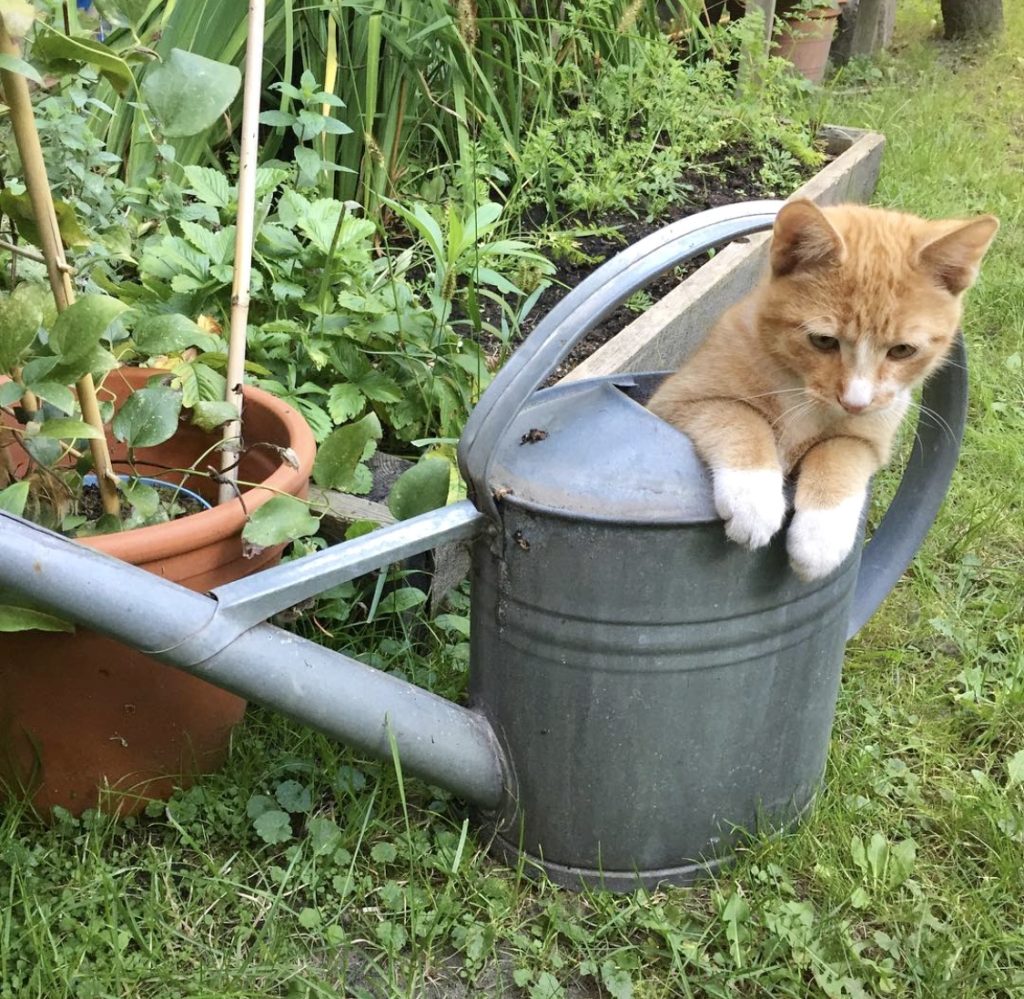The Charm of Antique Watering Cans
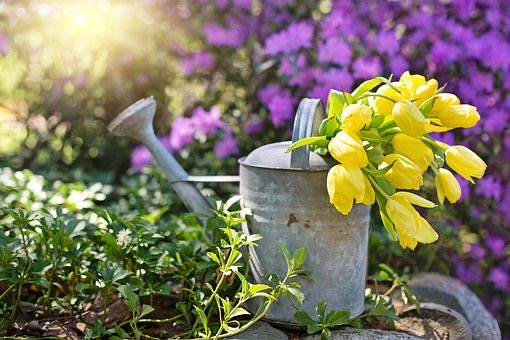
I love antique watering cans. Both functional and charming, they have been in use for hundreds of years to water plants and flowers. Before the watering can we know today, buckets and earthenware watering pots were used. These were cumbersome and often very heavy, especially after being filled with water! We have it pretty easy today with our 100 foot long garden hoses and adjustable spray nozzles. These people would likely call us gardening sissies!

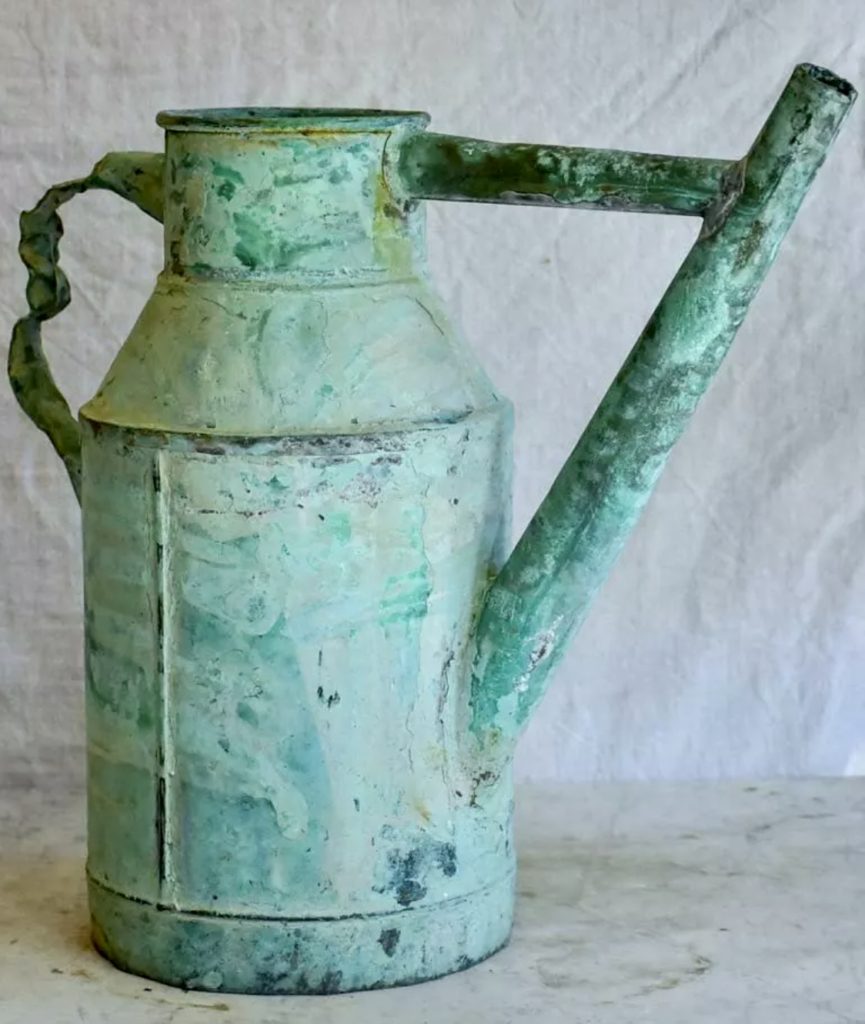
The humble watering can has undergone many changes. In the late 1600s, watering cans began to be constructed of copper. Then, during the mid-1800s, they were also produced in brass and zinc. Antique French watering cans of yore often resembled large pitchers, often with graceful and elegant handles. American watering cans tended to be larger and bulkier.
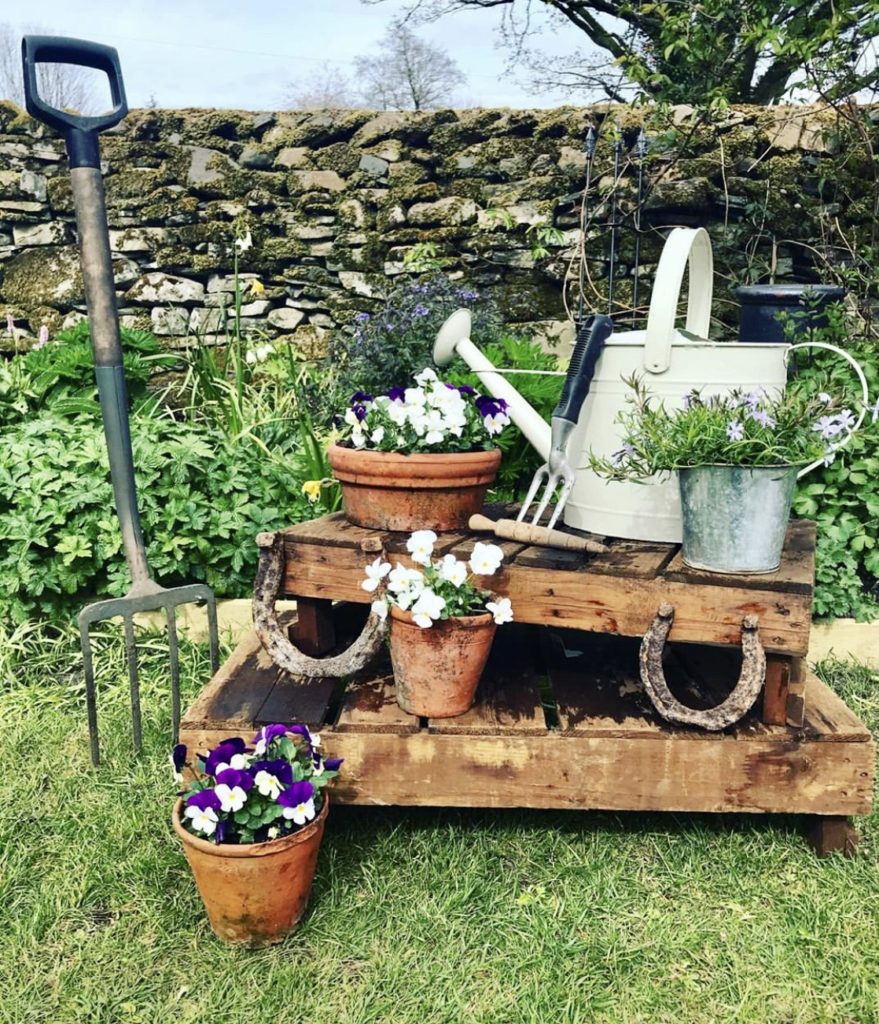
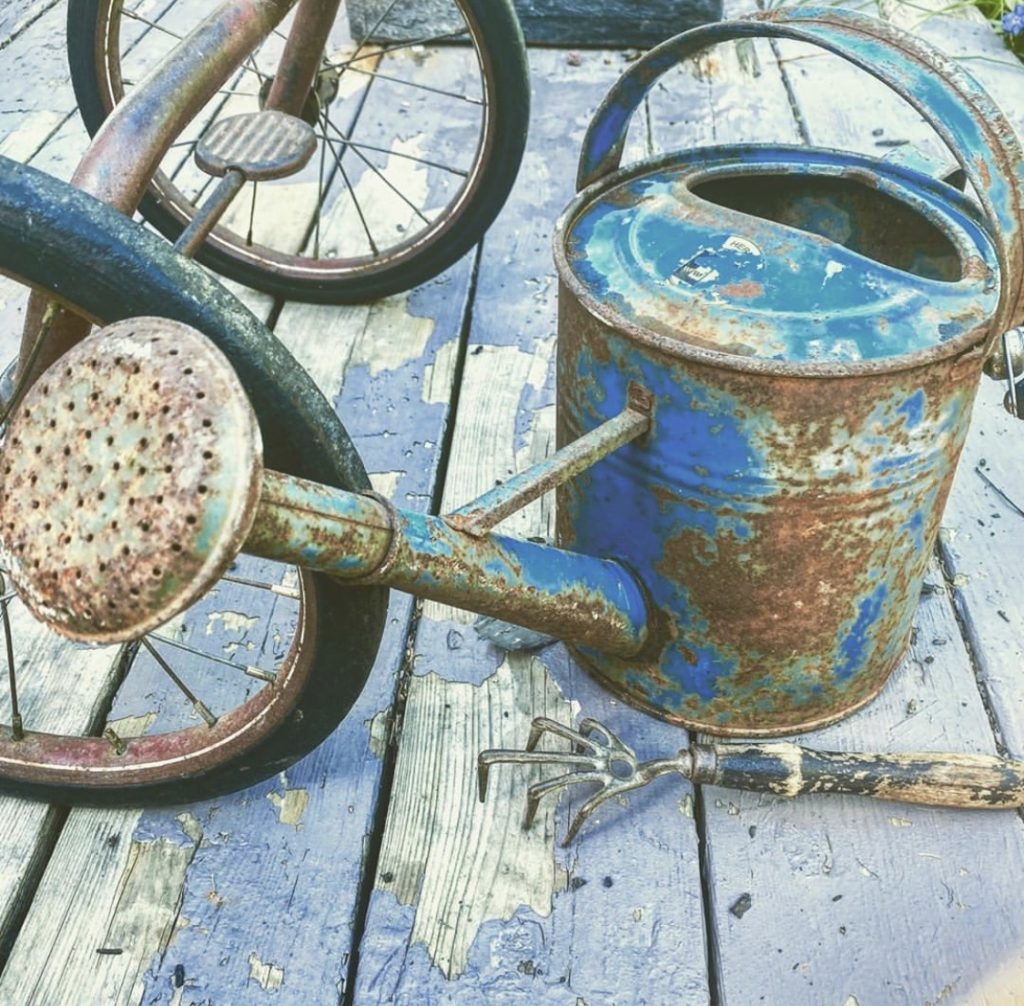
Gardening became extremely popular during the Victorian era. Due to a craze for ornamental gardens and greenhouses, the need grew for better watering cans. In 1886 the Haws Company came to the rescue. This English business revolutionized the humble watering can by creating a longer spout and two handles: one on the top for carrying, and one on the back for tipping and pouring. The Haws watering can remains a classic today.
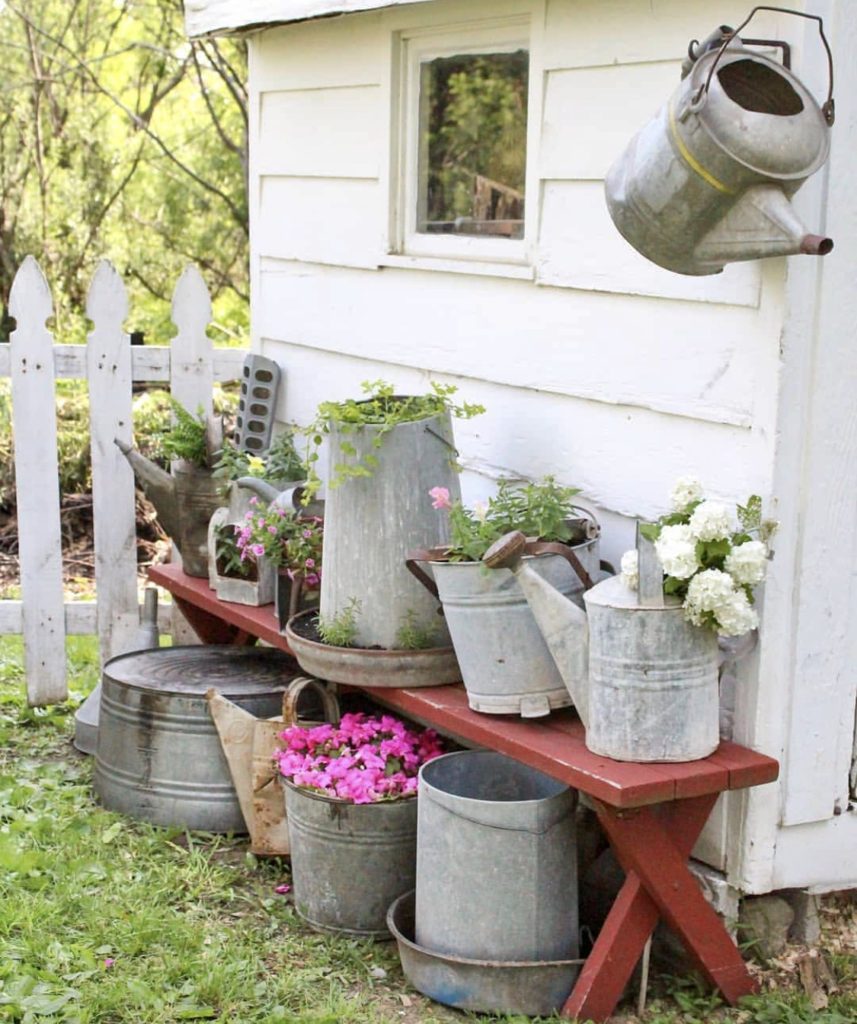
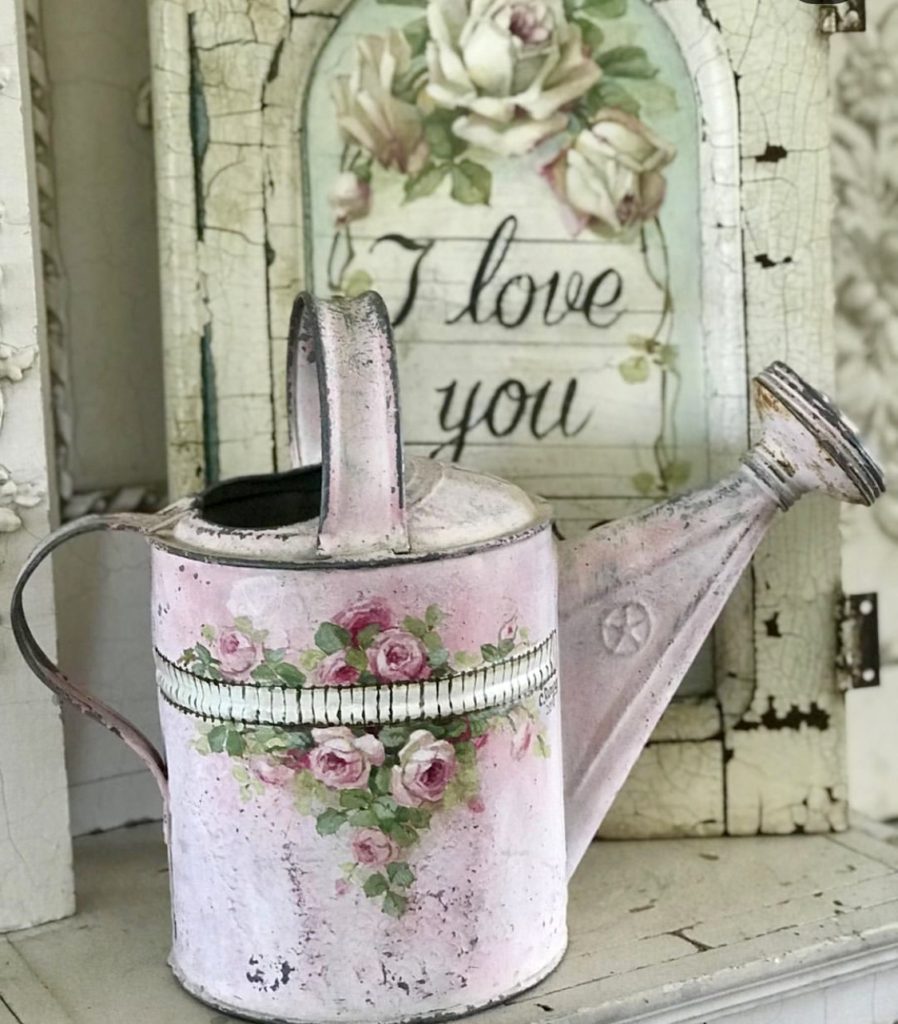
Another addition to watering cans was the use of a detachable sprinkling “rose” on the tip of the spout. It enabled the control of water flow, creating a gentle trickling of water from a multitude of tiny holes, versus a heavy torrent. Its name is derived from the French word “arroseur”, meaning sprinkler.
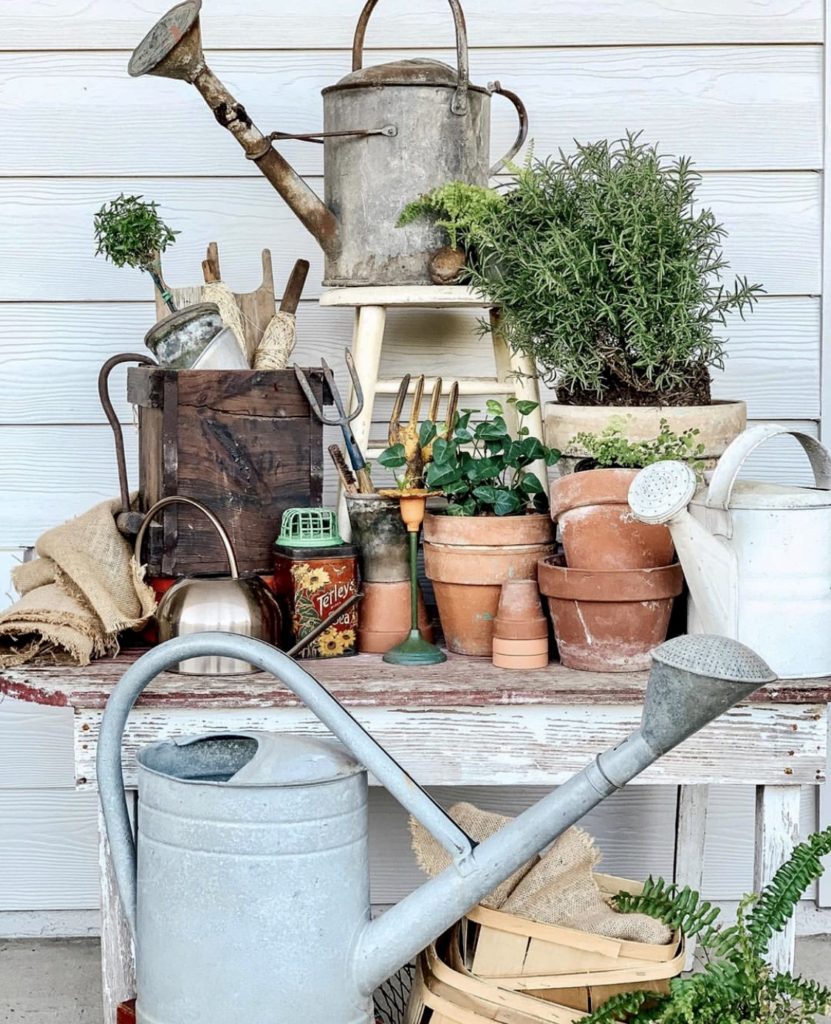
Galvanized metal watering cans became plentiful in the early 1900s. These are the most common antique watering cans found today.
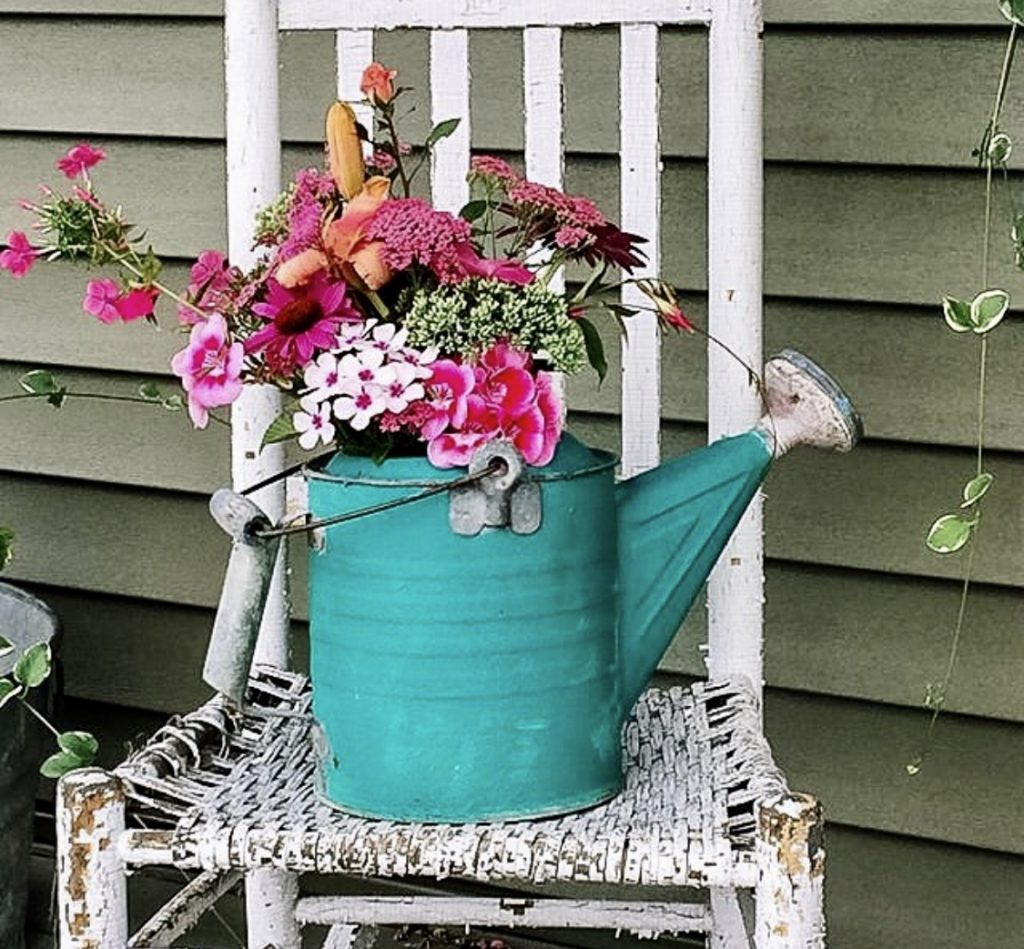
While early antique watering cans often sell for hundreds of dollars, later models can often be found for a more reasonable price at yard sales, flea markets and online sites such as eBay and Etsy. These may have dings and dents, but that is what adds character!
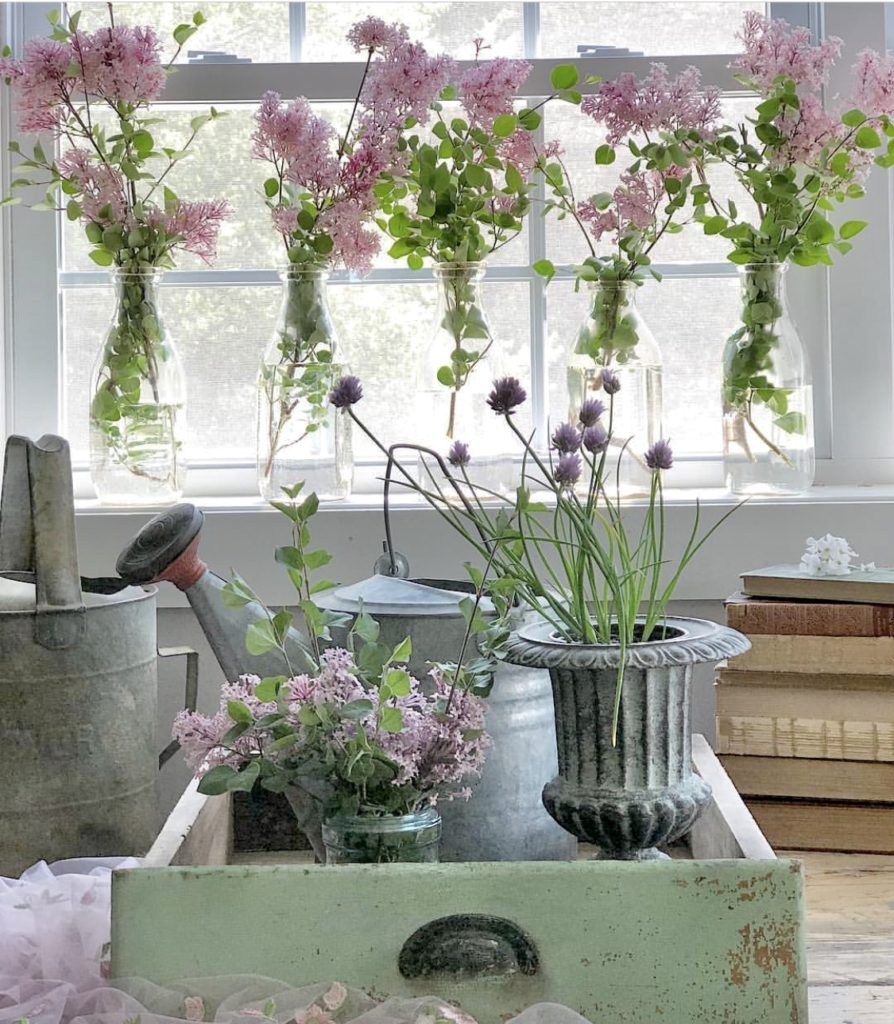
Even if you don’t have a green thumb, you can create charming vignettes using watering cans. Whether painted, filled with flowers, or hung on hooks, they can add warmth and a one-of-a-kind vibe.
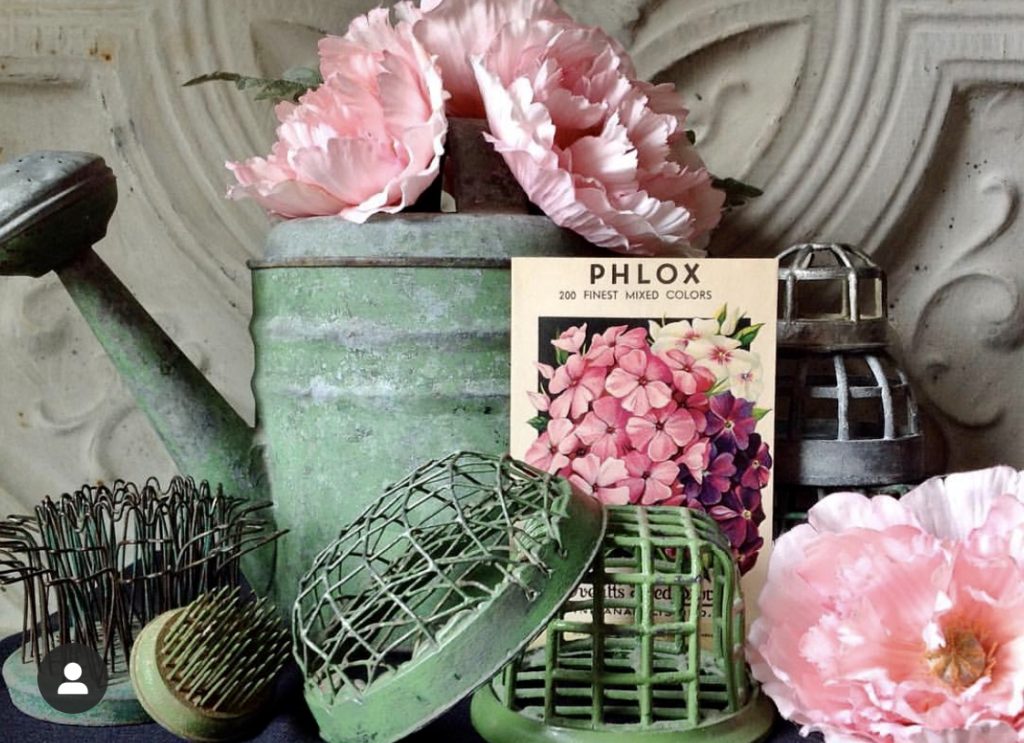
Some folks like to collect different sizes or styles and group them together.
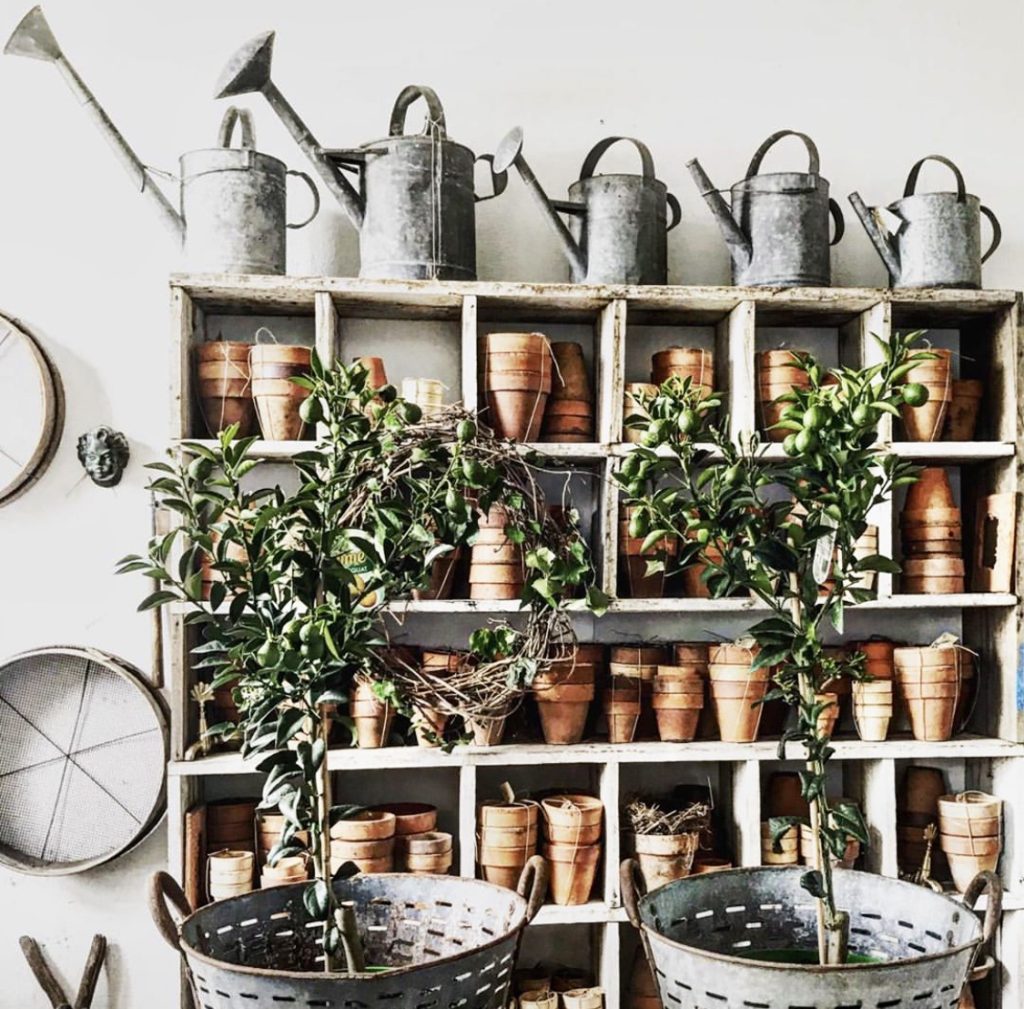
You can change your watering can decor along with the seasons. Your imagination is the limit!
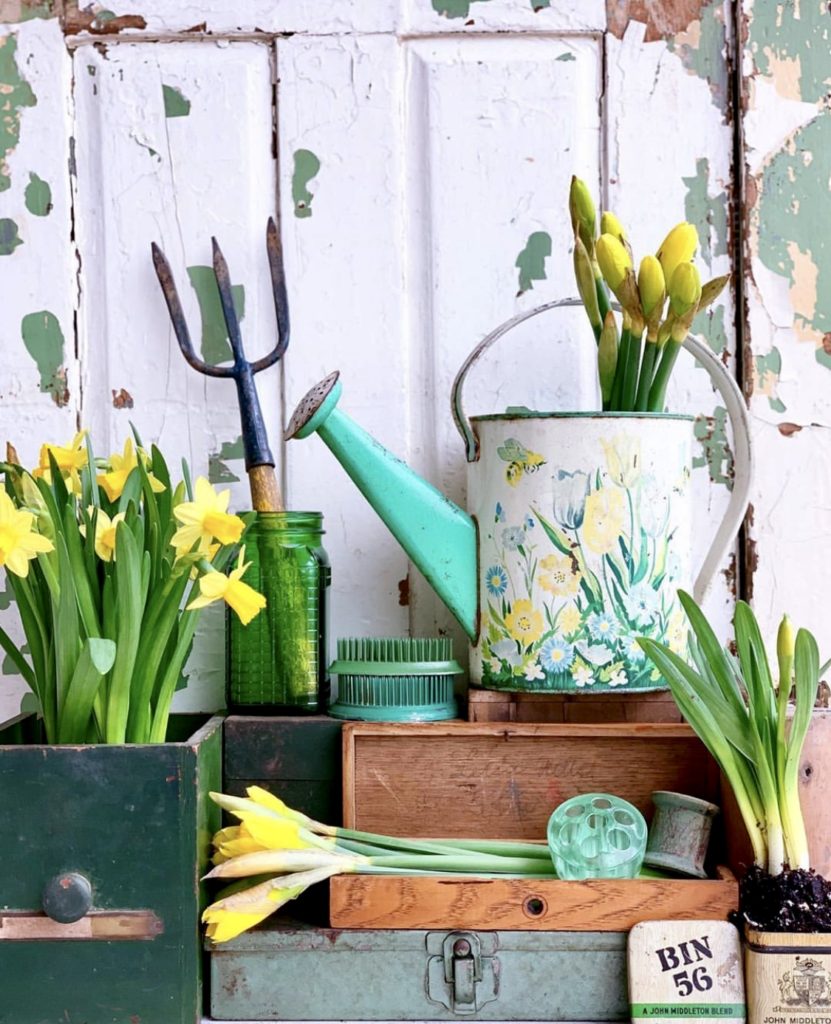
I hope you enjoyed this post and gained some watering can inspiration! For more information, see Antique Watering Cans, Antiques From The Garden, by Alistair Morris, and Garden Tools by Suaznne Slesin, Guillaume Pellerin, and Stafford Cliff. You may also enjoy some of my other gardening posts, including Have a Seat: Garden Bench Inspiration, Add Charm to your Garden with Beautiful Birdhouses!, and The Secret Gardens of Historic Monterey
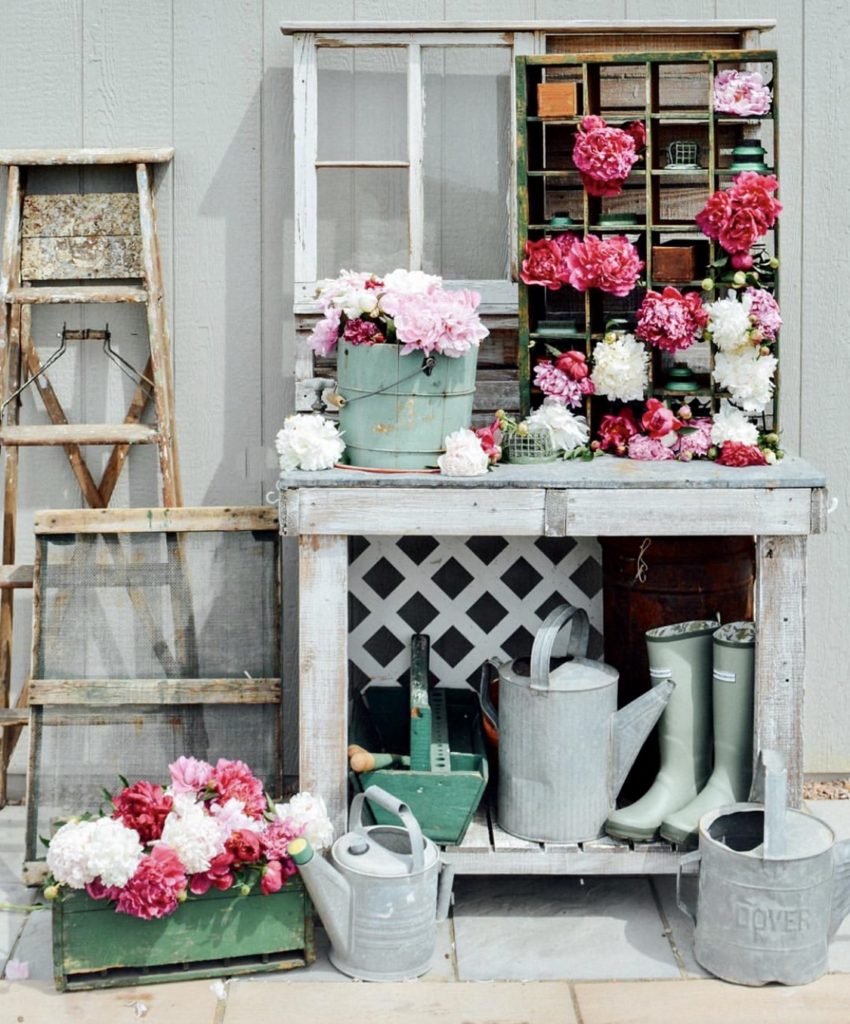
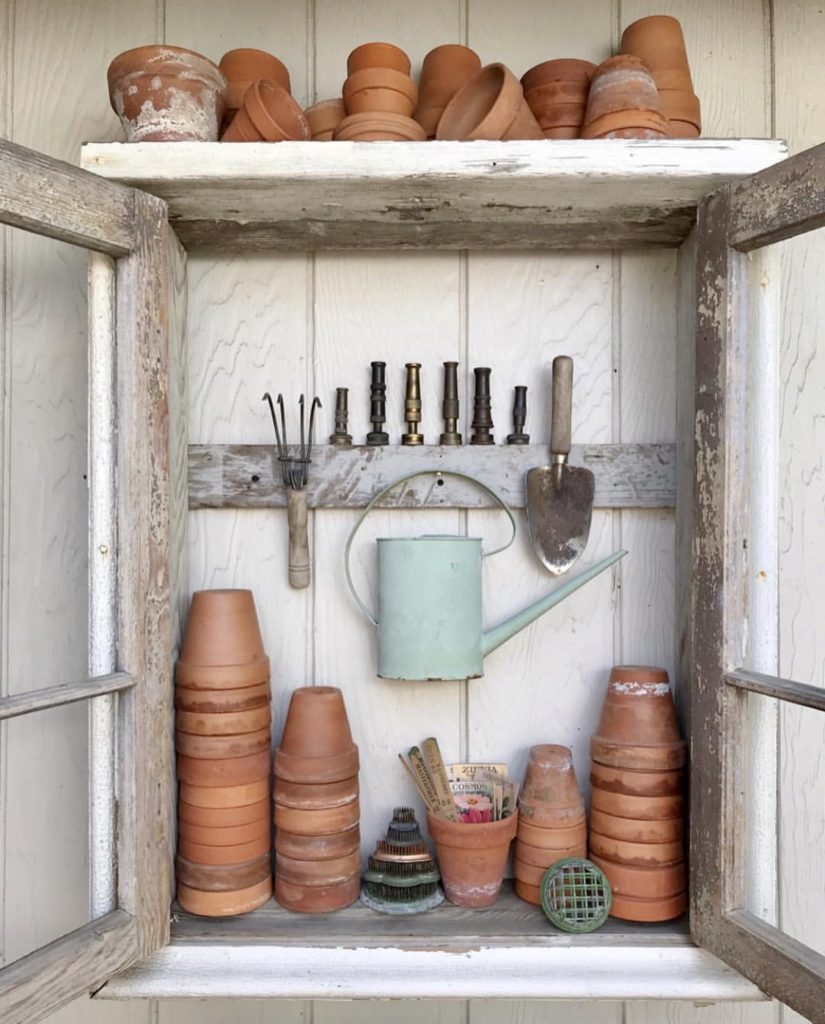
Wishing you peace, love, happiness and beautiful vistas!
